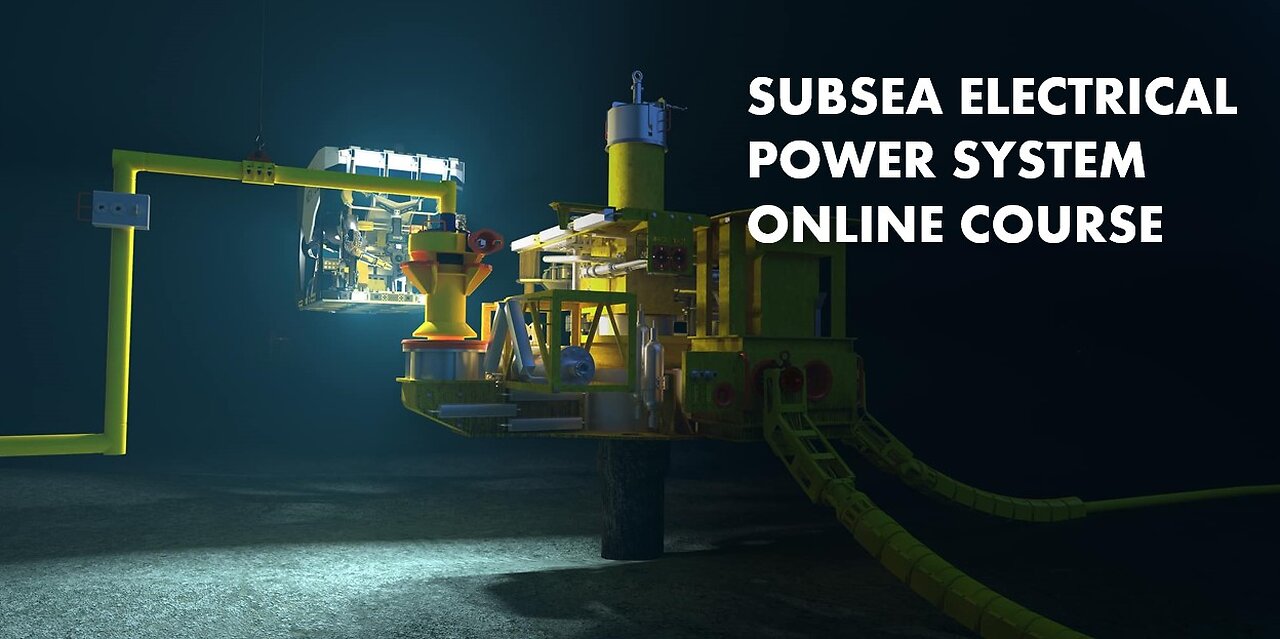Premium Only Content

Subsea Electrical Power System Online Course
The electrical power system in a typical subsea production system that provides power generation, power distribution, power transmission, and electricity from electric motors. The power is either generated on site (from a platform) or onshore (in a subsea-to-beach filed layout). To ensure continuous production from a subsea field, it is of utmost importance that the subsea system’s associated electrical power system be designed adequately.
Electrical Load Calculation
Electrical load calculation is one of the earliest tasks during electrical power system design. Engineers should estimate the required electrical load of all of the subsea elements that will consume the electricity so that they can select an adequate power supply. Each local load may be classified into several different categories, for example, vital, essential, and nonessential. Individual oil companies often use their own terminology and terms such as “emergency” and “normal” are frequently encountered. All of the vital, essential, and nonessential loads can typically be divided into three duty categories: Continuous duty; Intermittent duty; Standby duty (those that are not out of service).
Subsea power distribution systems are enablers for long-distance subsea tie-back developments and energy intensive processing activities on the seafloor. Providing power to subsea compressors, pumps and flowline heating, they are key to make viable and productive projects in deepwater, remote or harsh climate scenarios.
For full videos you can visit this link :
https://drive.google.com/file/d/1UzHWHovcOEzzIij1RoWtNFKlJvJeZlJb/view?usp=sharing
and you will be directed to a google drive link where you can download all files of this course
https://drive.google.com/file/d/1wnHVZHFAJfgQu1Nht83-ZCIfOVKt1aXX/view?usp=drive_link
-
 23:55
23:55
CartierFamily
3 days agoElon & Vivek TRIGGER Congress as DOGE SHUTS DOWN Government
54.7K74 -
 5:43:44
5:43:44
Scammer Payback
2 days agoCalling Scammers Live
141K21 -
 18:38
18:38
VSiNLive
2 days agoProfessional Gambler Steve Fezzik LOVES this UNDERVALUED Point Spread!
104K17 -
 LIVE
LIVE
Right Side Broadcasting Network
10 days agoLIVE REPLAY: President Donald J. Trump Keynotes TPUSA’s AmFest 2024 Conference - 12/22/24
4,919 watching -
 4:31
4:31
CoachTY
23 hours ago $27.59 earnedCOINBASE AND DESCI !!!!
147K11 -
 10:02
10:02
MichaelBisping
23 hours agoBISPING: "Was FURY ROBBED?!" | Oleksandr Usyk vs Tyson Fury 2 INSTANT REACTION
76.8K13 -
 8:08
8:08
Guns & Gadgets 2nd Amendment News
2 days ago16 States Join Forces To Sue Firearm Manufacturers Out of Business - 1st Target = GLOCK
104K87 -
 10:17
10:17
Dermatologist Dr. Dustin Portela
2 days ago $18.00 earnedOlay Cleansing Melts: Dermatologist's Honest Review
143K14 -
 1:02:20
1:02:20
Trumpet Daily
2 days ago $44.35 earnedObama’s Fake World Comes Crashing Down - Trumpet Daily | Dec. 20, 2024
99.9K67 -
 6:29
6:29
BIG NEM
1 day agoCultivating God Mode: Ancient Taoist NoFap Practices
73.5K20